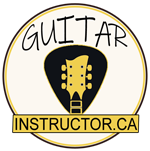
[ad_1]
Learning to play the guitar can be a challenging yet rewarding experience. As a new player, it’s important to establish a solid practice routine that will help you develop your skills and build a strong foundation for your musical journey. In this article, we will explore 5 must-try guitar practice exercises for new players that will help you improve your technique, build dexterity, and gain confidence in your playing.
1. Finger Exercises
One of the most important aspects of learning to play the guitar is building strength and dexterity in your fingers. Finger exercises can help improve your finger strength, agility, and coordination, which are essential for playing the guitar. One popular finger exercise is the “spider exercise,” which involves using all four fingers of your fretting hand to play a sequence of notes on different strings.
To perform the spider exercise, start by placing your first finger on the first fret of the low E string, your second finger on the second fret, your third finger on the third fret, and your fourth finger on the fourth fret. Play each note individually, then reverse the order and play each note descending back down. Repeat this exercise on each string, moving up and down the fretboard to challenge yourself.
2. Chord Progressions
Chord progressions are an essential part of playing the guitar, and practicing them can help you improve your knowledge of chords and their transitions. One great exercise for new players is to practice common chord progressions, such as the I-IV-V or the ii-V-I progressions. These progressions are found in countless songs and can help you build your repertoire of chord shapes and transitions.
Start by practicing the chord shapes individually, then begin to transition between them smoothly and efficiently. Pay attention to the placement of your fingers and the sound of each chord as you move through the progression. As you become more comfortable, try playing the progressions in different keys and at varying tempos to challenge yourself.
3. Scales and Arpeggios
Learning scales and arpeggios is a fundamental aspect of playing the guitar, and practicing them can help you improve your technique and gain a better understanding of the fretboard. Start by learning the major and minor scales, as well as their corresponding arpeggios, and practice playing them up and down the fretboard.
One effective exercise for new players is to practice playing scales and arpeggios in different patterns and positions. For example, try playing a scale in a three-note-per-string pattern, or play an arpeggio in an ascending and descending pattern. This will help you develop your finger coordination and improve your overall technique.
4. Rhythm Exercises
Developing a strong sense of rhythm is crucial for any musician, and practicing rhythm exercises can help new guitar players improve their timing and groove. One effective exercise is to practice playing along with a metronome or drum track, focusing on keeping a steady tempo and playing in time with the beat.
Start by practicing simple rhythm patterns, such as strumming quarter notes or eighth notes, then gradually increase the complexity of the patterns as you become more comfortable. Pay attention to your strumming hand and ensure that you are playing in a consistent and steady manner. This will help you develop a strong sense of rhythm and improve your overall musicality.
5. Song Repertoire
Building a repertoire of songs is an important part of learning to play the guitar, and practicing songs can help new players improve their technical skills and gain confidence in their playing. Choose a few songs that you enjoy and that are appropriate for your skill level, then practice playing them regularly.
Start by learning the chord progressions and melodies of the songs, then focus on playing them in time and with the proper technique. As you become more comfortable, try adding embellishments and variations to the songs to make them your own. This will help you develop your musicality and improve your ability to play a variety of styles and genres.
In conclusion, practicing these 5 must-try guitar exercises for new players can help you improve your technique, build dexterity, and gain confidence in your playing. By incorporating these exercises into your practice routine, you can develop a strong foundation for your musical journey and become a more skilled and proficient guitar player. So pick up your guitar, start practicing, and watch your skills improve with each passing day.
[ad_2]
